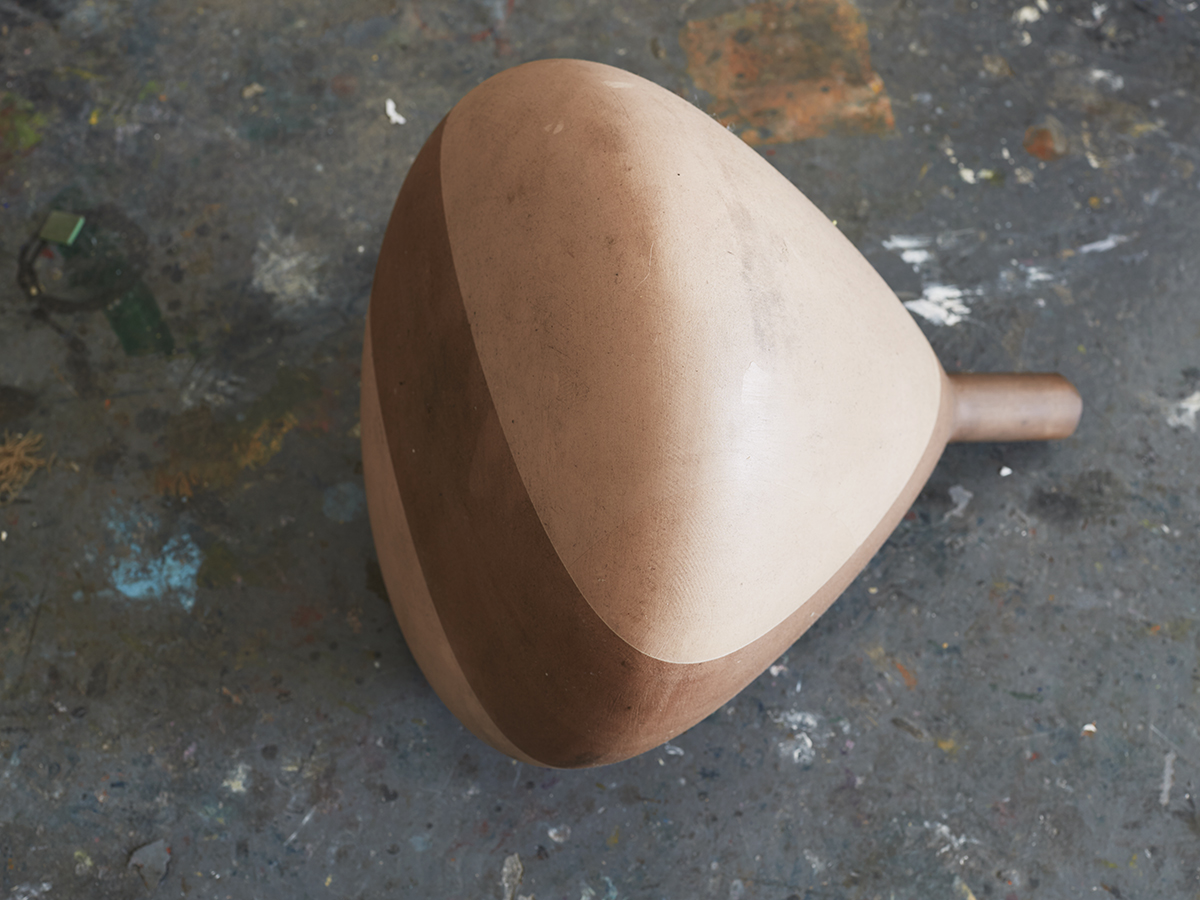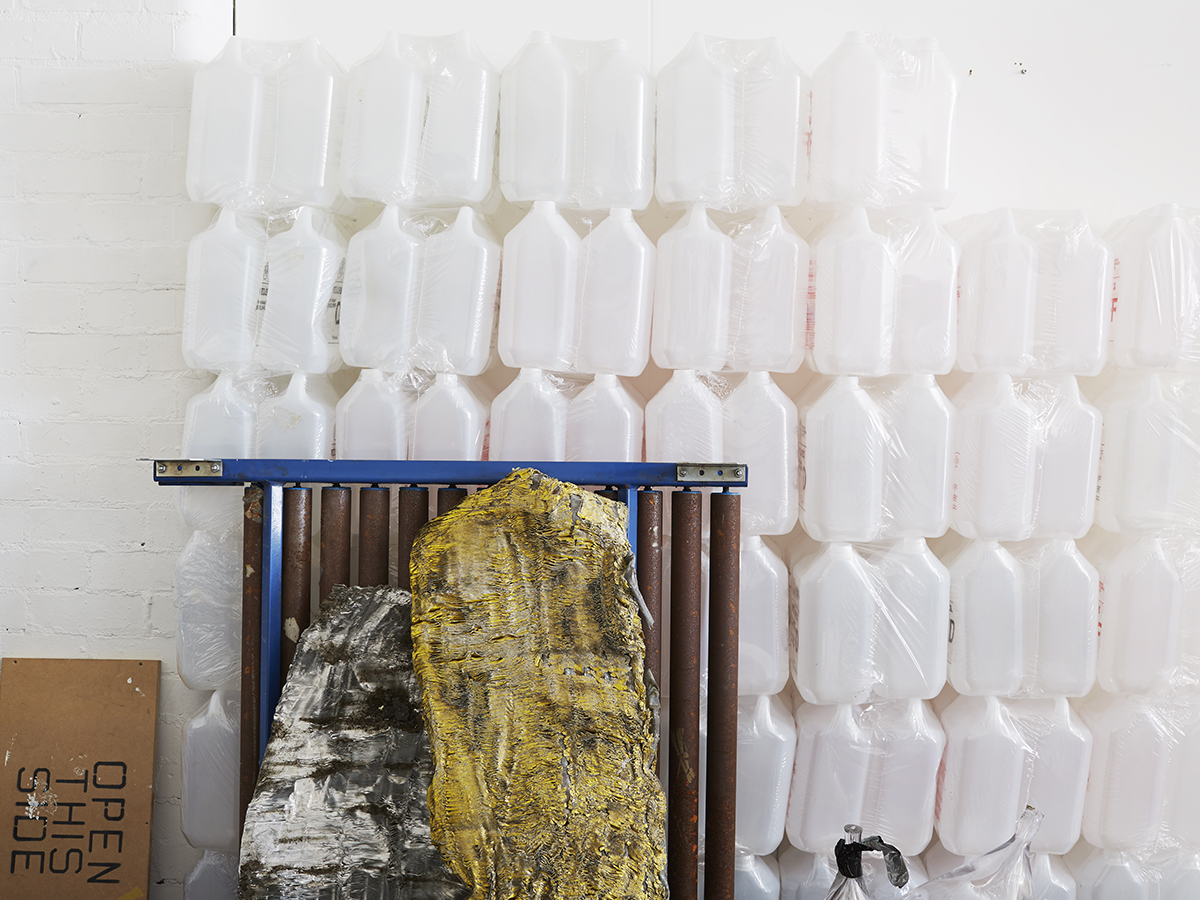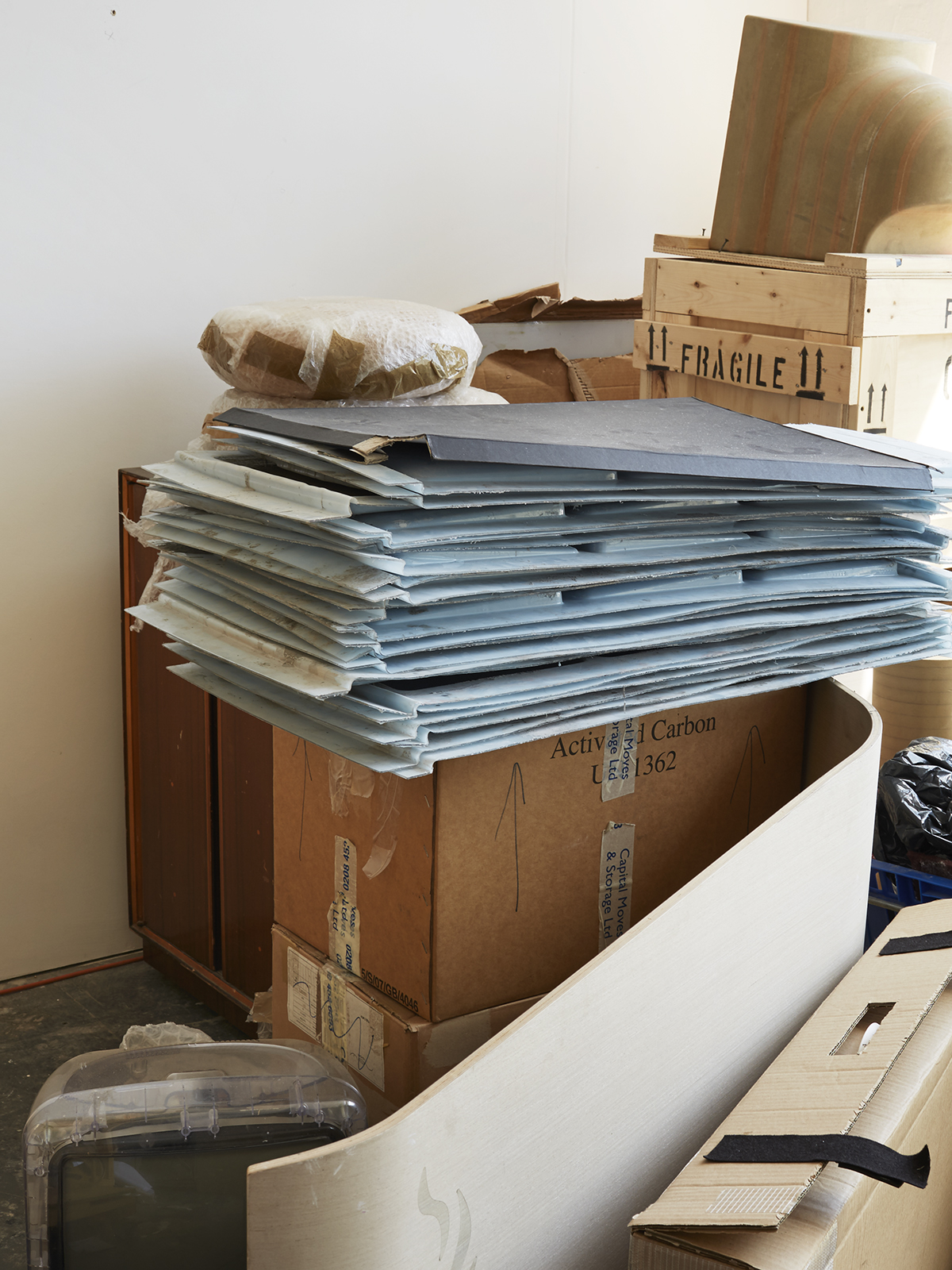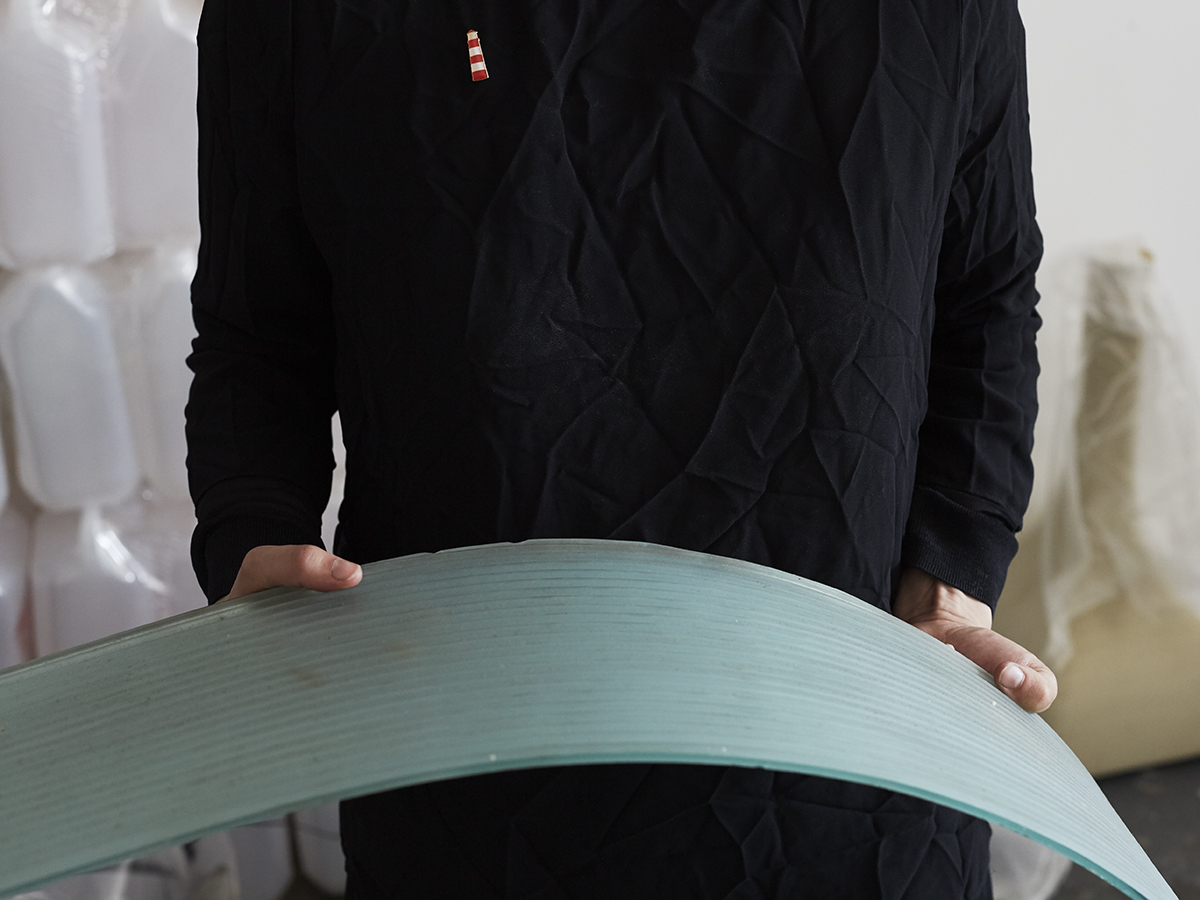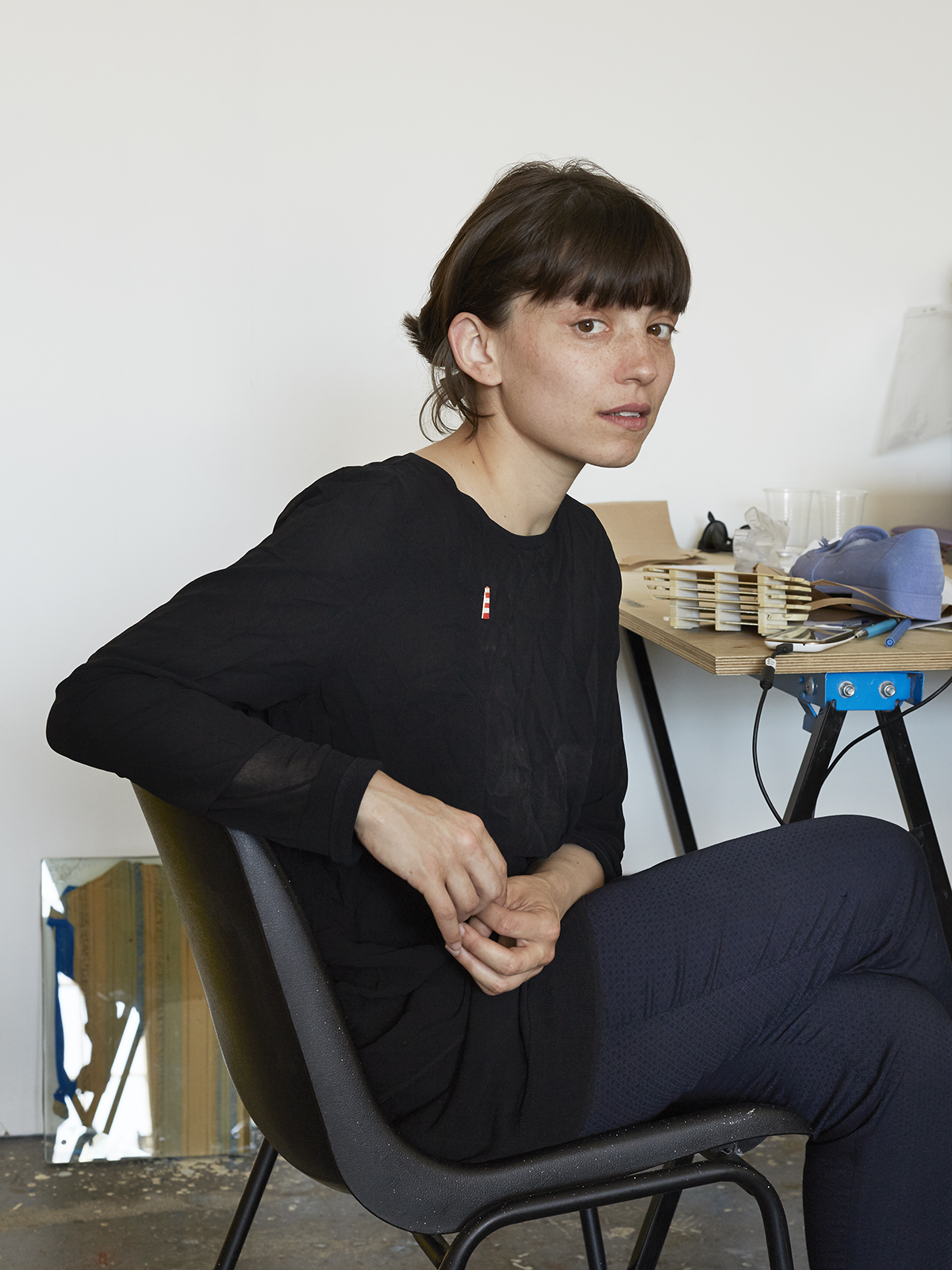
Lives on Wire opened this month and will remain in the ICA’s main hall until early September. Hawser has previously shown in group exhibitions at Tate Britain, New Museum (New York) and Rodeo (Istanbul) amongst others. She has also had a solo presentation at Frieze Art Fair in London. Hawser graduated from The Ruskin School of Art in Oxford in 2007 and went on to study at Stadelschule, Frankfurt between 2009 and 2012.
Are you drawn to these objects for their physical qualities, or for their practical use?
I think as objects they’re pretty fabulous looking. With the clear CRTs I have for example, they’re from prisons, that’s why they’re clear so that you can’t hide contraband in them. But they also have that tangible feeling where you can just about explain how they work. There are all these components that in some way bring this equation together that you can reverse engineer or unpack and kind of understand what’s going on.
Are you as interested in new technology?
Yes I am. I don’t know necessarily that you need to make such a distinction between new and old technology because there is such a continuum. I think if you look at all technology there’s quite a lot of overlap. If you take lithographic plates that are used for printing in newspapers, people look at them and they always presume they’re this obsolete technology because of how they look. The reason I think the lithographic plate is still around is because there’s no other way to produce the volumes without printing that way. There are some industries where they rely on very old tried and tested technology, like space for example. The guy that owned a lot of the organ equipment told me about space technology being very conservative and I thought that’s just so interesting. In the most advanced ideological field you might find some of the most tried and tested systems. The kind of technologies where you see the most innovation are for consumer things. CRTs for example aren’t completely obsolete. They’re still used medicinally and they’re still used in radar applications.
How did you come across the organ in Lives on Wire?
The colour changer that is used here is part of an organ and it’s quite complicated, the part that it is. It controls the changing colour on the front glass panels of the visible organ. The guy that owns the machine is an absolutely amazing guy, with endless knowledge and he has this collection, which is called Electrokinetica. He is quite interested in this moment in electronics where the mechanical and the electronic collide. That’s very much what you have in the cinema organ because it has a lot of moving mechanisms, but it also has some of the first electronic things like oscillators and capacitors. The other really nice thing about these instruments is that the rank of pipes and the percussion instruments are actually remote from the keyboard console, hidden within a wall. These cinema organs were built to do away with the orchestra because they were expensive and silent films were becoming more popular at that period. So they developed this machine that essentially remotes the orchestra and automates it, so the empty instruments of the orchestra are almost trapped in this cavity in the cinema. The exhibition has more of a meta context of disembodiment, rather than being more historically about the instrument. In the video of the Burberry store that is shown in Lives on Wire we tried to consider the space as an electro-mechanic machine in itself.
You must end up collaborating with quite a few people on this kind of work?
Yes, that’s definitely the case. Every aspect of this project was a collaboration in a way. I mean, the cables come from BT, they’re a collaborator!
There seems to be such a pride of making with this kind of technology.
There’s this endless layering of parts. There’s the console and the keyboard. Then part of the reason there are the cables in the show is because the cinema organ has this massive cluster of cables that come out of it, that you can see in the Burberry film, and those cables carry all the signalling. All cinema organs have this huge cluster coming out of them because they clump all of the cables together, and it’s great to see a really dense technology that occupies volumes of space.
Have you tried 3D printing?
I have and I like it a lot. It is pretty simple with a very basic principle. It’s one of those really interesting things where it’s a new technology and it hasn’t really made any inroads into mass production. They still haven’t quite pulled it into the realms where everyone could use it. It takes hours and hours to print anything so you couldn’t have a production line. You do in some cases but for very small components. It would be years until it could replace injection moulding.
Eloise Hawser: Lives on Wire is open at ICA, London until 6 September.
Photographs © Tim Smyth.

